Few architectural creations are as recognizable as cathedrals built in the Gothic style. Originating in the Middle Ages, Gothic architecture is extremely popular in Europe, even though it was temporarily replaced by architectural designs of the Renaissance. Nevertheless, multiple modern cathedrals built in the Gothic tradition still exist. In order to fully comprehend the uniqueness of the Gothic design style, it is essential to analyze its use of pointed arches, rib-vaulted ceilings, flying buttress, the ornamentation, and stained glass windows.
The most important element of the gothic architecture is the pointed arch. Figure 1 showcases the use of this element in Abbey of Saint-Étienne (Von Simson 150). Specifically, pointed arches can be observed in the lower part of the structure. In this picture, it can be seen how arches provide a method of opening space, while maintaining the length of the walls and providing more walking space.
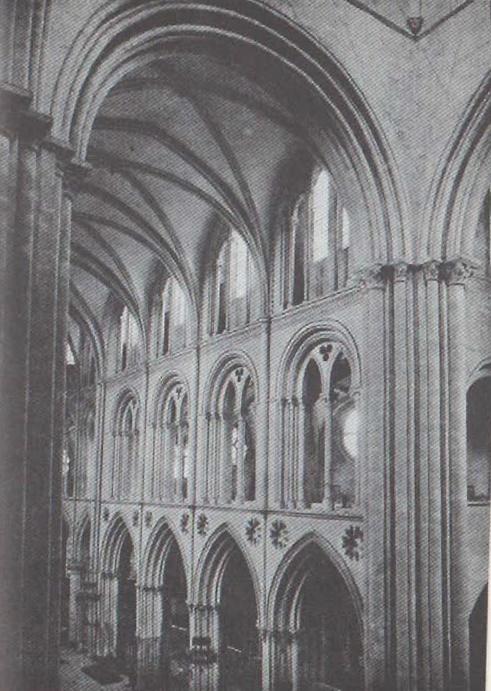
The engineering purpose of pointed arches lies in the distribution of weight. Most Gothic cathedrals were built of brick and stone, which necessitated extreme care in the management of weight (Von Simson 204). Unlike older Romanesque architecture, Gothic cathedrals were higher and allowed for more space1, which could be used for doors and windows (Pearsall 73). The use of pointed arches made the abundance of space possible.
The second defining element of the Gothic design style is rib-vaulted ceiling. Figure 2 demonstrates how this element was used in the Abbey of Saint-Étienne (Von Simson 152). Vault ceiling is the geometric continuation of crossed pointed arches. It is depicted in the upper part of the image, where rows of arches intersect at the top. Vaulted ceilings are can be recognized due to figure of X.
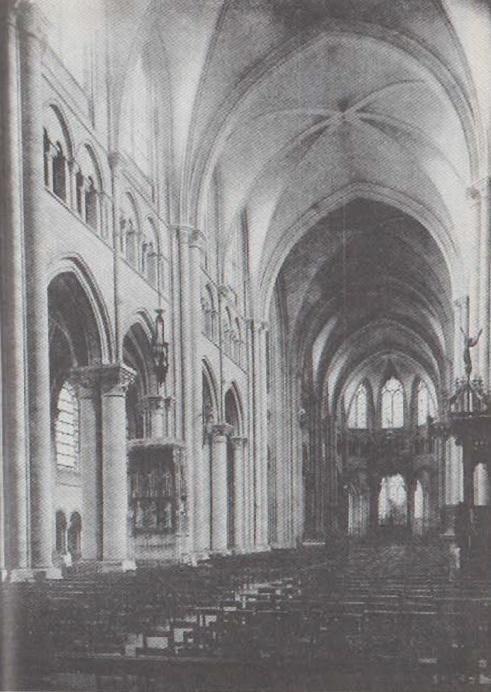
The reason why vaulted ceilings were used was the opportunity to create tall cathedrals with a large amount of space. In comparison with older churches, which were thick and dense, Gothic cathedrals are significantly more spacious. Furthermore, Gothic design style avoids excessive use of large supporting columns, which older architecture invariably relied on (Pearsall 253). The reduction in use of columns was made possible due to the use of pointed arches and vaults.
The third important element of the Gothic architecture is the use of flying buttress. Figure 3 showcases how a variation of this element was used in the Charters Cathedral (Von Simson 151). Flying buttress is a structure that supports a building without any contact with the wall on the ground, which is a stark contrast to a traditional buttress that attaches directly to the wall.
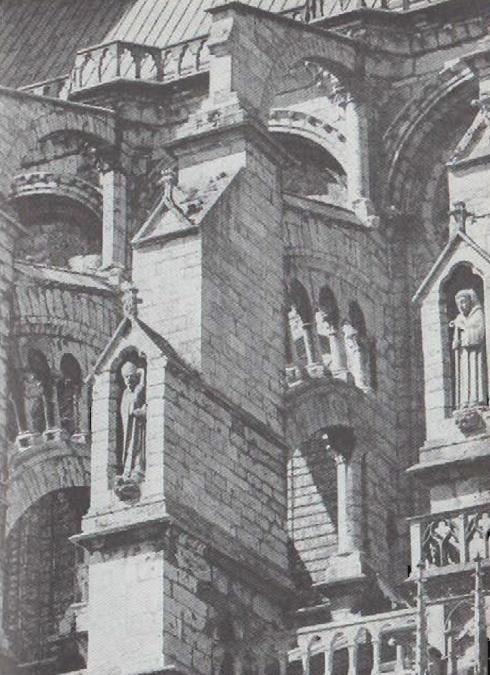
The use of flying buttress is also important because it allows Gothic cathedrals to have a unique silhouette. Older architecture relied almost exclusively on walls to support the buildings (Pearsall 253). However, Gothic cathedrals are notably more spacious on the exterior2. Not only does the use of flying buttress allows architects to avoid using walls, but it also provides an opportunity to fill the space with windows.
The fourth important element of the Gothic design style is the ornamentation. Figure 4 presents an example of the use of this element in the Cathedral of Notre Dame (Von Simson 149). Ornamentation serves primarily decorative and stylistic purposes, such as education on Biblical imagery. At the center of the image, it is possible to observe the rose window, depicting the Final Judgement – an extremely popular Gothic architectural element.
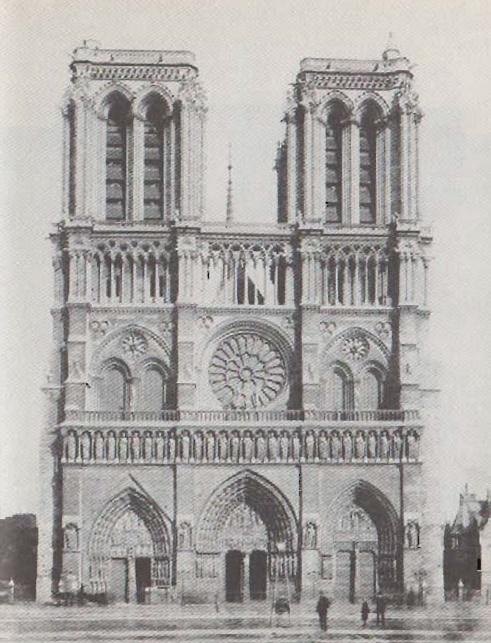
However, there was also a practical purpose of the ornamentation in Gothic cathedrals. Biblical imagery can be evoked not only by the use of decorated windows, but also by sculptures. One particular element that was commonly used in Gothic architectural tradition was gargoyles (Pearsall 113). Aside from the spiritual meaning, these sculptures served as water-spouts that moved rain water from the roof, thus preventing erosion of the interior.
The fifth distinguishing element of Gothic architecture was large stained glass windows. Figure 5 demonstrates Abbey of St. Dennis, which had numerous windows (Von Simson 153). Gothic cathedrals are easily recognizable precisely due to large walls of stained glass windows. In the same way, the ornamentation serves the educational and aesthetic purposes, Gothic windows were also decorated with imagery of various Biblical and historic stories.
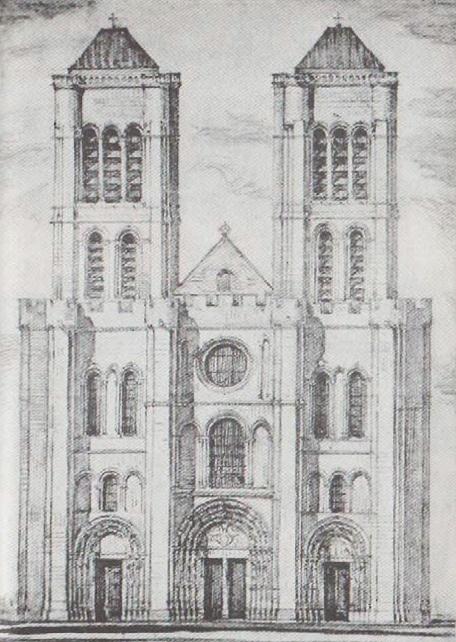
Meanwhile, there was also a practical side to the use of large windows. The interior of churches built in older architectural traditions were significantly darker. However, the use of pointed arches and flying buttresses allowed architects to insert more windows into the structure of cathedrals (Pearsall 111). As a result, the use of windows makes the environment considerably lighter, while the abundance of space allows the building to preserve daylight.
Altogether, is should be evident that the combination of pointed arches, rib-vaulted ceilings, flying buttress, ornamentation, and stained glass windows was the foundation behind the uniqueness of Gothic architecture. The use of pointed arches, rib-vaulted ceilings, and flying buttress created large spacious buildings, while the ornamentation and stained glass windows provided light and unprecedented aesthetics to cathedrals. Overall, the architectural richness determines the long-lasting popularity that Gothic design has to this day.
Works Cited
Pearsall, Derek. Gothic Europe 1200-1450. Taylor & Francis Group, 2017.
Von Simson, Otto Georg. The Gothic Cathedral: Origins of Gothic Architecture and the Medieval Concept of Order – Expanded Edition. Princeton University Press, 2020.
Footnotes
- Unlike rounded arches used in early Muslim mosques, pointed arches are more efficient and provide more space (Pearsall 73).
- In order for weight to be distributed properly, flying buttresses had to be constructed on both sides of buildings, thus completing the silhouette shape (Pearsall 253).